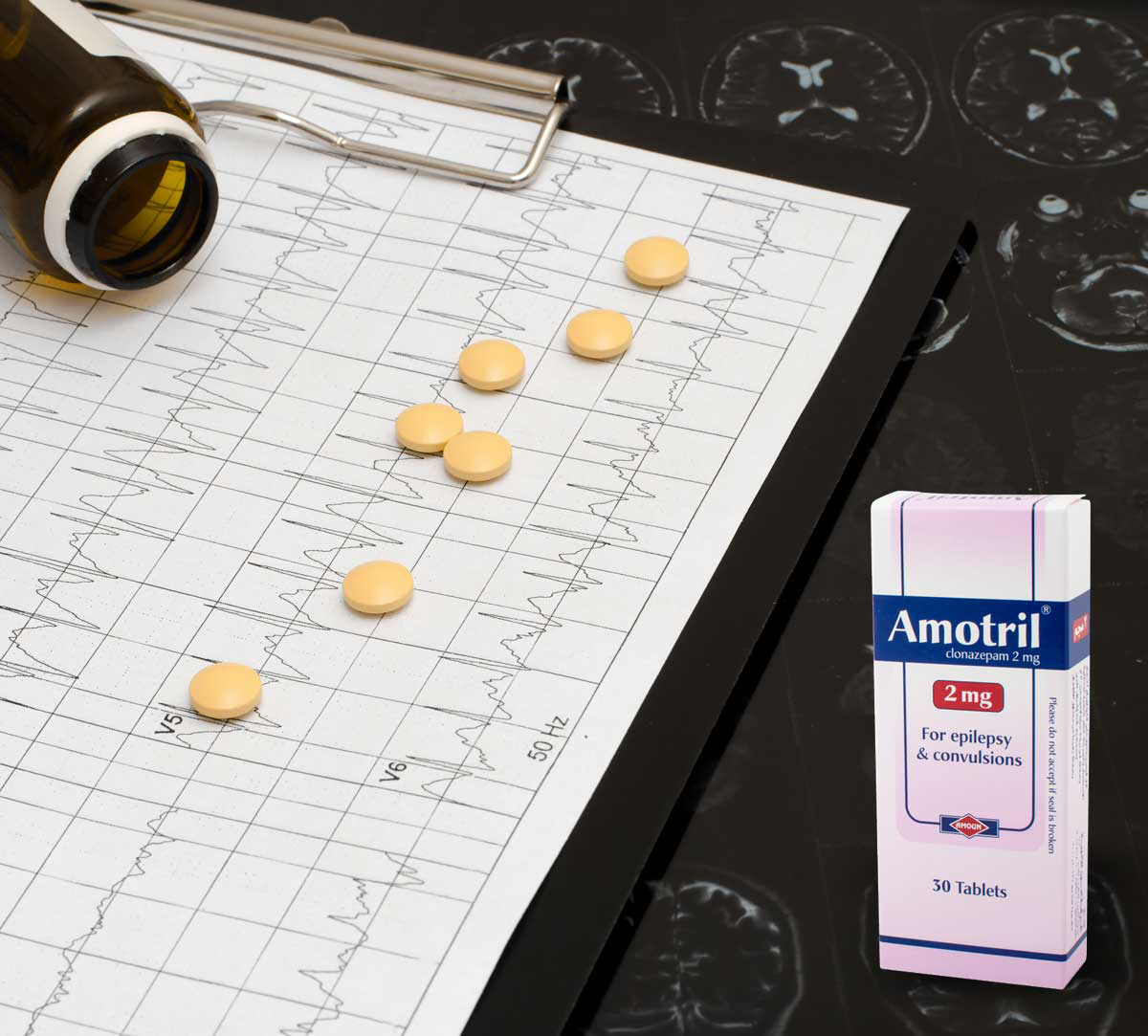Table of Contents
Anticonvulsants are a large group of medications used in the prevention of the occurrence of epileptic seizures. This group of medications is also known as anti-epileptics.
Although they were initially used only to treat epileptic episodes, today they are also seen as mood stabilizers. It has been proven that anticonvulsants can help in the treatment of bipolar disorder, formerly known as manic depression.

An epileptic attack is a consequence of the rapid and excessive firing of neurons that starts a seizure. Anticonvulsants prevent this process from starting, and thereby contain the spread of the seizure within the brain, as well as preventing possible brain damage. There are several possible mechanisms of action: some of these drugs block Sodium (Na+) channels and Calcium (Ca2+) channels, while others block AMPA receptors or NMDA receptors. Some anticonvulsants inhibit the metabolism of GABA or increase its release.
The anticonvulsants used most commonly are barbiturates and benzodiazepines. Instead of using only one drug, people often take two or more anticonvulsant medications to prevent seizures; possible drug interactions may cause several health problems.
Types of seizures treated with anticonvulsants
A seizure is a synchronized depolarization of brain cells. A seizure can affect only parts of the brain, or sometimes the whole cortex. The seizure mechanism is the only way the brain can defend itself against outer influences!
There are four different types of seizures, each with its own characteristic symptoms:
- Petit Mal
- Grand Mal (Generalized Tonic Clonic)
- Single Focal
- Partial Complex
Petit mal seizures are characterized by:
- Minimal or no movements
- The person will appear to have a blank stare
- A brief sudden loss of awareness or conscious activity
- Seizures that recur many times throughout childhood
- Decreased learning abilities
Grand mal seizures are characterized by:
- Generalized and violent muscle contractions
- Patients who emit a sudden cry
- Breathing stopping temporarily
- A loss of consciousness
- Weakness
- Stupor (loss of mental function)
- Headache
- Confusion
- Incontinence of urine
- Tongue or cheek biting
Single focal seizures are marked by:
- Muscle contractions of a specific body part
- Abnormal sensations
- Nausea
- Sweating
- Skin flushing
- Dilated pupils
- Other focal (localized) symptoms
Partial complex seizures are marked by:
- Automatism (uncontrolled movements or actions)
- Nausea
- Sweating
- Skin flushing
- Dilated pupils
- Loss of consciousness
- Changes in personality
The most commonly used anticonvulsants and their side effects include:
- Phenytoin (Dilantin®) and Hydantoin: Dizziness, drowsiness, confusion, Ataxia, nausea, gingival hyperplasia, megaloblastic anemia, leukopenia
- Carbamazepine, (Epitol®, Tegretol®), Tricyclic: Sedation, dizziness, fatigue, confusion, ataxia, nausea, blood, dyscrasias, hepatotoxicity
- Valproic acid (Depakene®, Depakote®), Carboxylic acid: Anorexia, diarrhea, nausea, drowsiness, ataxia, irritability, confusion, headache, leucopenia, thrombocytopenia, hepatotoxicity, prolonged bleeding time
- Ethosuximide (Zarontin®), Succinimide: Ataxia , sedation, dizziness, hallucinations, behavioral changes, headache, Stevens-Johnson syndrome, systemic lupus, erythematosus, nausea, anorexia
- Clonazepam (Klonopin®), Benzodiazepine: Tachycardia, drowsiness, fatigue, anxiety, ataxia, headache, dizziness, blurred vision, Xerostomia
- Primidone (Mysoline®), Barbiturate derivatives: Drowsiness, vertigo, ataxia, behavioral changes, headache, nausea
- Phenobarbital (Barbita®, Luminal®, Solfoton®), Barbiturates: Dizziness, lightheadedness, sedation, ataxia, impaired judgment, skin rashes
Anticonvulsants as mood stabilizers
Mood stabilizers are medications that are widely used to treat mood disorders, especially bipolar disorder. These drugs are used to treat the depressive part of this disorder (which also has a manic part, of course.)
Anticonvulsants that are also often used as mood stabilizers include valproic acid and carbamazepine. There are several theories regarding their mechanism of action, although nobody yet knows precisely how they work. The most probable theory is the one that claims they regulate the glutamate excitatory neurotransmission and GABA inhibitory neurotransmission.
Studies have shown that these drugs also have certain intracellular effects such as modulation of the activity of enzymes, ions, arachidonic acid turnover, G-protein coupled receptors, and intracellular pathways involved in synaptic plasticity and neuroprotection in the brain.

